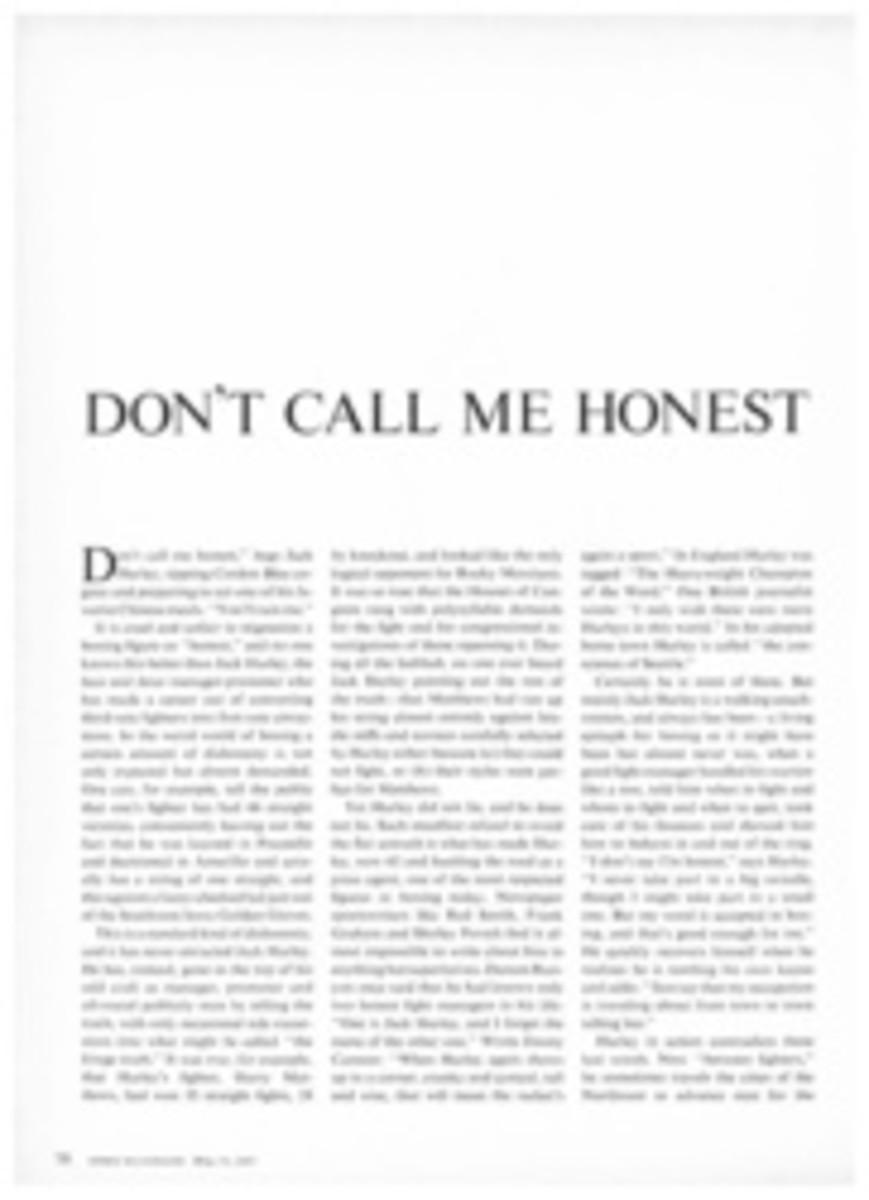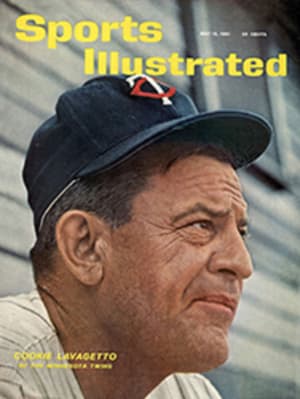
A TIRE SALESMAN WITH HORSE SENSE
The Indianapolis Speedway will sell 135,000 seats this year to the Memorial Day 500-mile car race at prices scaled from $5.50 to $30. One man sure to be present is a renowned horseman and ex-polo player who, on most other leisure days, prefers to spend his time on horseback at his farm in the lush, rolling country of northeastern Ohio. He is Raymond Christy Firestone, president of the company that bears his family name, and he could, if he chose, buy every seat at the Speedway. He will sit in none of them however. Instead he will be found in the tumultuous pit area, perched on a stack of Firestone racing tires, hobnobbing easily with drivers and mechanics and, when the race has begun, following its stormy, 3½-hour progression with rapt attention.
A small, wiry man of 52, who parts his hair just to the right of center and whose harsh, sharp features are typical of all his family, Ray Firestone has been a fixture at the venerable "500" almost as long as the cars. (By no coincidence, Firestone tires were mounted on the winner of the first "500" in 1911 and have been worn on all winners since 1920.)
In the old days, young Raymond, his four brothers and his father, Harvey S. Firestone Sr., who founded the company, would arrive at the track during race week on a private Pullman car. Nowadays Ray, who has never shaken the "500" habit, comes to Indianapolis by private twin-engine airplane. Little else about his annual visit has changed.
Firestone, in fact, is still scarcely more than a spectator of the race, despite the fact that the Firestone company credits the "500" with having contributed some 50% of the technical knowledge that has gone into its passenger tires. Firestone's interest in the proceedings, to be sure, is a notch above that of the run-of-mine infield spectator who views the race as a carnival and who, surfeited with frivolity and beer, sometimes dozes through much of the afternoon. "You have to remember," says a Firestone acquaintance, "that not only is Ray an avid racing fan, but every tire on that track has got his name written on it in big white letters." Cynics suppose that Firestone donates the tires. He does not. The tires are sold to the drivers at about $55 apiece, and should they prefer another brand, they are entirely welcome to use it. Winners, however, are paid by Firestone for advertising endorsements, and drivers are loth to overlook that added source of income. "But," says Rodger Ward, the 1959 "500" winner, "a lot of us drivers would use the tires anyway. We feel it is largely because of Ray Firestone's efforts that we are alive today."
In the pit area Firestone finds the immediacy of action and excitement that he likes. Quiet and unseeking himself—"almost mousy," says one driver—Firestone once wore white coveralls during the race in order to remain inconspicuous. He is now too well known for such subterfuge and wears business clothes. He is an expected and welcome speaker at the drivers' prerace meeting and is, in the words of one company man, "on a first-name basis with everyone from the highest driver to the lowest grease monkey." Firestone values the friendships he has made. He was so shaken by the death of Pat O'Connor in 1958, for example, that he retired to the Firestone office at the track and wept.
Automobile racing excites Firestone, but since it cannot relax him, he consequently devotes much of his leisure time to riding horses, an interest he has held since childhood. Here again the influence of Firestone's father is apparent, for the Ohio dirt farmer who founded the company never lost his love for the horses he helped put out of business.
When Raymond and his brothers were growing up in Akron, where the company began, Harvey Sr. kept some 50 horses on the place. Most were hunters, but enough were polo ponies for Firestone's sons to become fairly proficient at the game. At Princeton, Ray joined the school's team, was so good he was elected captain in his junior and senior years and led it, in 1933, to the intercollegiate championship. Partly on the strength of this—although other considerations were taken into account—he was elected by the senior class as "most likely to succeed." It was a sound choice.
Shortly after graduation in 1933, Firestone gave up polo and other diversions to launch his career in his father's corporation. While his climb to the top ("He began by pumping gas," says an admiring company man) wasn't exactly a Horatio Alger success story, Raymond Firestone rose in the company hierarchy, and four years after his humble start was president of a Firestone subsidiary in Memphis. It was there that his fondness for horses reasserted itself, and on a farm outside Memphis he began to raise and train hunters and show horses, some of which won blue ribbons.
In 1949, he returned to Akron with his wife Laura An (who died last summer) and his two daughters, Christy An, now 25, and Judith An, 21. Made president of the parent company in 1957, Firestone installed his family in a handsome (coral-red stucco walls, rust-red clay roof) and splendid (18 rooms, eight baths) home in Bath, Ohio, a tiny farming town 12 miles northwest of Akron. It cost, counting the land, half a million dollars. He installed his horses in a stable that, in its way, is as impressive as the house. Other features of the 750-acre farm are 50 head of cattle, eight barns, 10 dwellings and a covered, heated riding ring the size of a convention hall where, two days before last Christmas, Firestone broke four ribs when his mount thought better of jumping a hurdle, stopped and left Firestone to go it alone.
Most of the horses (there are generally 20 of them at one time) on the Firestone estate are Thoroughbreds who washed out on the race track and, says Firestone, "are delighted we've given them a second chance as hunters."
Firestone seldom has enough time for his horses. Consequently, he takes time where he finds it, and this, customarily, is 6 o'clock in the morning. Almost daily, summer and winter, he gets up at that hour and goes to the stable. There he is usually met by his trainer, Max Bonham, and for the next hour the two of them jump fences or ride briskly across the countryside. "It's the one time of day," says Firestone, "when I'm able to let down for a minute and forget all the pestering pressures of the company."
But what Firestone enjoys most about his horses is the excuse they give him for an annual winter vacation in Camden, S.C. Camden, about 30 miles northeast of Columbia, is famed in horse circles for its temperate winters and its sandy soil, which absorbs rain water in minutes and is particularly valuable for the all-weather conditioning of the three to four hundred race horses brought there each winter. Becoming firmly attached to the region after a visit several years ago, Firestone bought 10 acres of choice (i.e., sandy) and outside Camden, named them the LauRay Farms after his wife and himself, and now trucks horses south each year after his daughters complete the winter show circuit in the midwestern and eastern U.S. Firestone goes to Camden for three weeks in February or March, avoiding as much as he can the relentless telegrams, phone calls and packets of mail that follow from Akron. He more or less succeeds in this escape by keeping to the saddle throughout much of the day, working with Bonham and his daughters, both championship riders, schooling the horses. Three afternoons each week he suspends training class to ride to hounds with the Camden Hunt (whose 35 hounds, or as they say, 17½ couples, were donated by Firestone last year).
Although Camden is best known and most used for training race horses (C. V. Whitney and Marion duPont Scott, among others, have stables there), Firestone has little interest in racing "because it's too much like a business." Says Firestone: "To see horses run around and around is not my idea of fun. To see a car run around and around at Indianapolis—well, I must admit that's my weakness."
So is his family. That is one other reason behind his interest in riding. "The horses we have raised and shown and hunted have had a wonderful effect on my family," he says. "It has been an interest we have all been able to share, something we have been able to do together. Unquestionably, it has knitted us more closely together."
PHOTO
RICHARD MEEK
RAYMOND FIRESTONE STANDS IN FRONT OF NEWEST RACING TIRES AT AKRON PLANT
PHOTO
RICHARD MEEK
Two Firestone Thoroughbreds, Constant Comment and her foal, graze in one of the spring-green pastures on his 750-acre farm
TWO PHOTOS
RICHARD MEEK
On handsome grounds of Ohio farm, Firestone leads Max Bonham over jump and (below) rides with family on sunrise hunt
ILLUSTRATION

